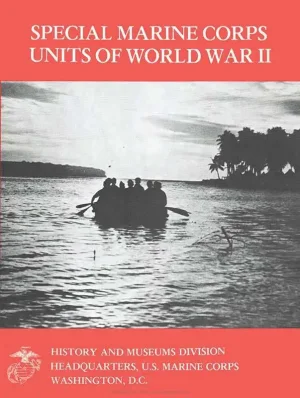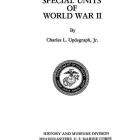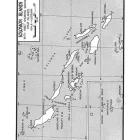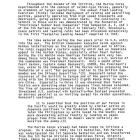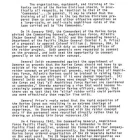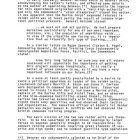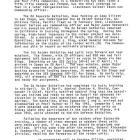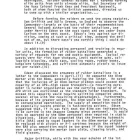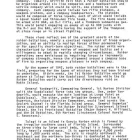- Military Library
- Literature
- WWII Books
- Special Marine Corps Units of World War II (published 1972)
Special Marine Corps Units of World War II (published 1972)
History and Museums Division Headquarters, U.S. Marine Corps, Washington, D.C.
Special Marine Units of World War II is a brief narrative of experimental special purpose units organized by the Marine Corps for World War II. It is published for the information of those interested in the special units and the events in which they participated. During World War II, a variety of new and experimental units were organized by Marine Corps to enhance the capabilities of the Corps.
For the first time under one cover, this historical reference pamphlet tells of the development, deployment, and eventual demise of the five types of special units: raiders, parachutists, glider forces, barrage balloon squadrons, and base defense battalions. Official records of the Marine Corps and appropriate historical works were utilized in compiling this chronicle.
Among the proudest traditions of the United States Marine Corps is the legend "First to Fight". This recognized ability to deploy effective forces in a minimum of time to meet any contingency is not easily maintained. It requires a careful evaluation of international trends and a constant reappraisal of the tactics and forces necessary to meet any crisis. The types of forces which must be maintained, and the structure of these forces, must be reviewed and updated.
During the middle and late 1930s, concurrently with the Japanese expansion into northern China, the Marine Corps studied and refined its amphibious doctrine. Subsequently, the Corps stepped up its experimentation with new theories and methods to meet world-wide contingencies. Especially in the aftermath of the outbreak of war in Europe, the United States military establishment undertook a reexamination of its resources and capabilities. The Marines were among the most aggressive when it came to adapting current forces to future requirements.
A number of the units which emerged from this period, and from the early war years, were either overtaken by events during the course of the war, or never lived up to their original promise. In these cases, the Marine Corps reorganized or disbanded the units as dictated by the tactical requirements. This monograph traces the origin, formation, deployment, and eventual demise of five such units.
Contents of the book
- Foreword (iii)
- Preface (v)
- Table of Contents (vii)
- Introduction (ix)
- The Raider Battalions (1)
- Marine Parachute Battalions (36)
- The Glider Group (47)
- Barrage Balloon Squadrons (54)
- Defense Battalions (61)
- Conclusion (78)
- Footnotes (79)
- Appendix A - Unit Commanding Officers (84)
- Appendix B - Unit Battle Honors (93)
- Appendix C - Unit Tables of Organization - T/O (99)
- Appendix D - Unit Tables of Equipment – T/E (102)
- Appendix E - U. S. Naval Ships Named for Men of the 1st Raider Battalion (105)
- {{#owner}}
- {{#url}} {{#avatarSrc}}
{{name}} {{/url}} {{^url}} {{#avatar}} {{& avatar}} {{/avatar}} {{name}} {{/url}} - {{/owner}} {{#created}}
- {{created}} {{/created}}


